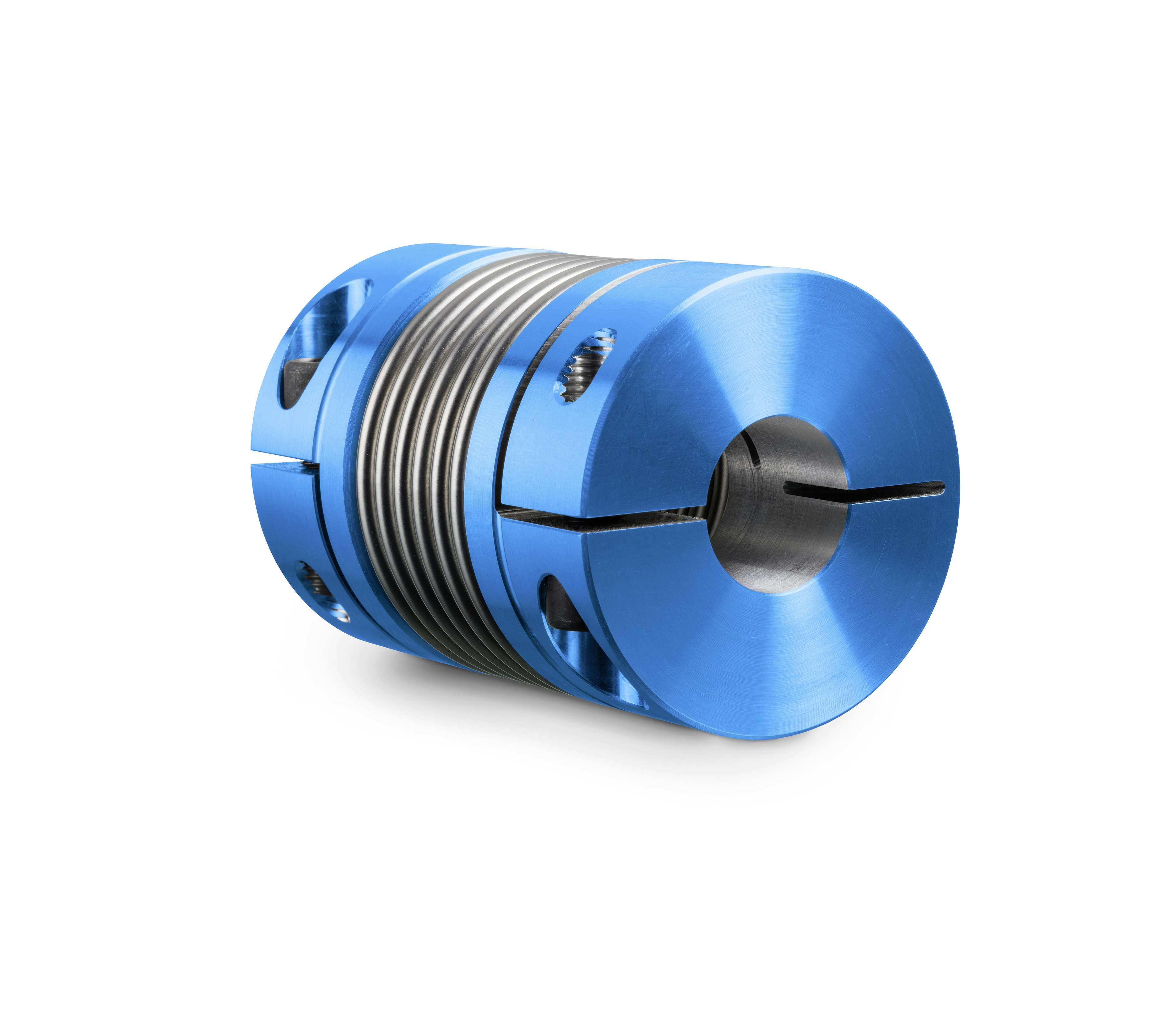

Couplings connect two shafts with each other. Depending on the design of the machine, this connection can be rigid, flexible or even movable, which makes it necessary to install a flexible or a rigid coupling. In the past, rigid couplings were considered the low-cost, imprecise variants of couplings. They were usually manufactured in-house and were not considered for servo applications due to their less than positive characteristics. But in recent years, a great deal of work has gone into developing precise, high-performance rigid couplings. Small rigid couplings made of aluminum are particularly interesting because they have high dimensional stiffness, excellent torque characteristics, and great backlash-free performance.
We take a closer look at rigid couplings and show the areas in which they develop their full performance.
Rigid couplings are also known as shell couplings and are torsionally stiff. This means that they do not exhibit any torsional deformation even under heavy torque loads. When used in locations where shaft misalignment can be controlled, rigid couplings develop very good performance characteristics. If the speeds are high and cannot be controlled, then thermal changes occur in the shafts. These changes occur at the high speed of rotation due to heat buildup. Since the rigid couplings have no flexibility, they cannot compensate for the thermal changes. Shell couplings are therefore not used at high speeds that cannot be controlled.
If you buy a rigid coupling in a simple version, it has set screws. The coupling is fixed to the shaft point by point with the help of the pins.
On the other hand, rigid couplings with clamping hubs are advantageous. They completely enclose the shaft and therefore have strong torsional holding forces without damaging the shaft. In addition, frictional locking can be prevented. Another advantage of two-piece rigid couplings is that they are very easy to mount and dismount for later maintenance. No other components need to be removed for this. Conventional rigid couplings are used at speeds up to 3000 rpm. Rigid couplings consisting of two parts, on the other hand, can be used at speeds of up to 4000 rpm, since such a coupling features dynamic compensation.
Three-piece rigid couplings are used much less frequently. If the shaft cannot be removed axially, then such a coupling is suitable. It consists of a three-piece clamping hub, which makes assembly and disassembly much easier. The three-piece rigid coupling is also able to compensate for the differences between shafts of different sizes, as the clamping connections are fitted independently of each other on the two shafts.
Let's move on to our bestsellers in the field of rigid couplings. Particularly well known are the manufacturers FLENDER and KTR, which convince with their excellent quality and unbeatable price-performance ratio.
The SIPEX metal bellows coupling comes from the manufacturer Flender. It can be used in different design variants, which ensures maximum flexibility. As a torsionally stiff coupling, it is virtually wear-free, which is why maintenance is not necessary. The coupling is suitable for highly dynamic applications and can be used at a maximum speed of 15,000 rpm. Areas of application include positioning applications, filling systems and conveyor technology.
The BIPEX-S is also from Flender. It has a specific system that has vibration damping, electrical insulation and plug-in properties. This coupling is suitable for highly dynamic applications, creates shaft misalignment compensation and has a low mass moment of inertia. It is used in filling equipment, positioning applications, and conveyor systems, among others.
The ROTEX claw coupling is made by KTR. It compensates misalignments which occur radially, angularly as well as axially. It is a fail-safe shaft coupling with a simple assembly, which is completely maintenance-free. On request, we can supply this coupling with a customized corrosion protection. The ROTEX is used overall in the industry.
Another metal bellows coupling which is one of our absolute bestsellers and therefore a real insider tip is the TOOLFLEX from KTR. It is a flexible, torsionally stiff coupling which does not require any maintenance due to its special characteristics. If you order the sizes 55, 65 or the type KN, the coupling hubs are made of steel. If the torque is transmitted true to angle, the TOOLFLEX can optimally compensate angular, axial and radial misalignments.
Use our rigid couplings for precise and powerful torque transmission.
Contact us. We look forward to hearing from you.